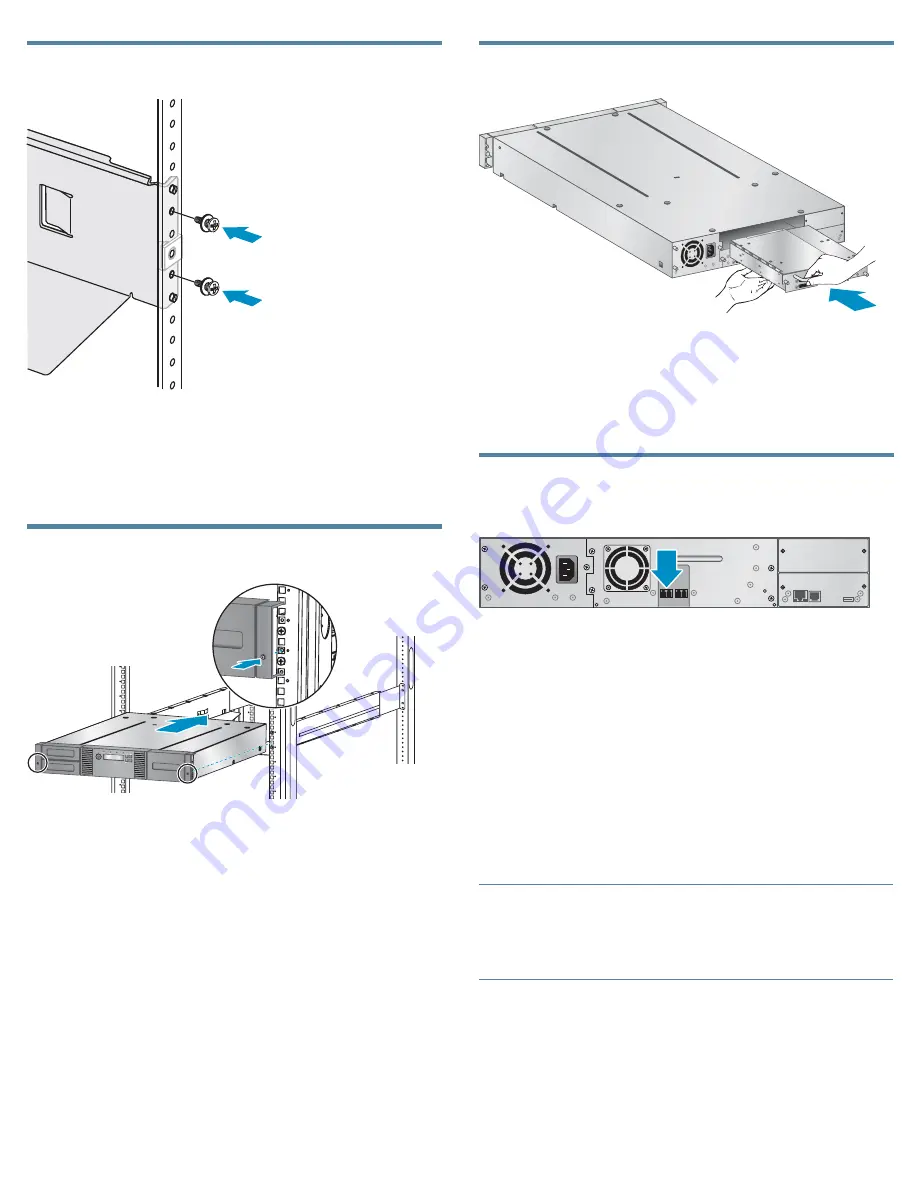
3 Securing the rails to the rack
11423
Using two screws and flat washers from the
Standard rack hardware
packet, secure the front of one rail to the front of the rack. Extend
the rail and secure the back of the rail to the rack using two screws
and flat washers.
Secure the other rail in a similar fashion.
4 Installing the Autoloader
11404
Slide the Autoloader onto the rails. Secure the front bezel to the
rack using a #2 Phillips screwdriver placed through the small holes
in the mounting bracket to tighten the captive screws on each side
of the Autoloader.
Optional: Adding a tape drive
1 08 0 7
With a tape drive upgrade kit, the Autoloader can hold up to two
half
‐
height LTO tape drives.
Remove the drive bay cover with a Phillips screwdriver. Slide the
tape drive into the bay until it is firmly seated. Tighten the blue
thumbscrews with your fingers until the tape drive is secure.
5a Planning the Fibre Channel
configuration
11418
The Fibre Channel tape drive has two Fibre Channel ports. Only one
port may be used at a time, but both ports can be connected for path
failover if your application supports path failover.
Direct connection
You will need a 2 Gb or 4 Gb Fibre Channel HBA. A 4 Gb HBA is
recommended for LTO
‐
4 tape drives for optimum performance.
SAN connection
All switches between the host and the Autoloader must be of the
appropriate type. A 2 Gb switch in the path may result in
performance degradation when backing up highly compressible data
to a 4 Gb tape drive.
Configure zoning on the Fibre switch so only the backup servers can
access the Autoloader.
NOTE:
See Step 13 for additional Fibre Channel configuration information.
See the
Sun StorageTek
™
SL24 Tape Autoloader and SL48 Tape Library
User and service guide
on the documentation CD for instructions on
changing the Fibre Channel configuration.
Page 6












